
Are you searching for a new furry companion that’s as delightful as a warm ray of sunshine on a cool morning? Look no further, because the world of Puggle dog breed information and characteristics is waiting to be explored.
From their unique origin story and friendly temperament to their exercise needs and potential health concerns, there is much to learn about these adorable hybrid dogs.
Whether you’re a seasoned dog owner or new to the world of canine companionship, this discussion will provide you with valuable insights that will help you make an informed decision.
So, let’s embark on this journey together and unravel the fascinating world of Puggles.
Key Takeaways
- Puggles are a hybrid breed of Beagles and Pugs, first bred in the US in the 1980s.
- They are small to medium-sized dogs, weighing between 15 and 30 pounds.
- Puggles have a friendly and outgoing temperament, making them good with children and other pets.
- They require at least 30 minutes of exercise per day and adapt well to apartment living.
Origin
The origin of Puggles can be traced back to the United States in the 1980s, where they were first bred as a cross between Beagles and Pugs. This new hybrid breed was created to combine the best traits of both parent breeds.
Puggles quickly gained popularity due to their adorable appearance and friendly temperament. They were specifically bred to be small to medium-sized dogs, weighing between 15 and 30 pounds and standing 10 to 15 inches tall.
Puggles have become well-known for their outgoing personalities and their ability to get along well with children and other pets. They require at least 30 minutes of exercise per day and enjoy activities such as playing fetch, going for walks, and running in the yard.
See another Dog breed profile.
Puginese Mixed Dog Breed
Size

Measuring between 10 to 15 inches tall and weighing anywhere from 15 to 30 pounds, Puggles are small to medium-sized dogs that pack a lot of personality. Despite their compact size, they aren’t fragile or delicate. Puggles have a sturdy build that allows them to keep up with an active lifestyle.
Whether it’s going for walks, playing fetch, or running in the yard, these dogs have the energy and agility to participate in various activities. Their size also makes them suitable for apartment living. Puggles can adapt well to smaller spaces, as long as they receive regular exercise to prevent any unruly behavior.
Lifespan

Now let’s turn our attention to the lifespan of Puggles, those adorable small to medium-sized dogs with big personalities. Puggles have an average lifespan of 12 to 15 years. This means that they can bring joy and companionship to your life for a long time.
With proper care, exercise, and a healthy diet, your Puggle can live a happy and fulfilling life for many years. It’s important to remember that each dog is unique, and individual factors such as genetics, diet, exercise, and overall health can influence their lifespan.
Regular visits to the veterinarian, a balanced diet, and providing a loving and stimulating environment can help ensure that your Puggle lives a long and healthy life by your side.
Temperament

Puggles are known for their friendly and outgoing personalities, making them a delightful addition to any family. When it comes to temperament, here are some important things to know about these adorable dogs:
- Sociable: Puggles are naturally social and enjoy being around people and other pets. They’re great companions for children of all ages and usually get along well with other dogs and pets.
- Playful: These energetic pups love to play and have fun. They enjoy activities like fetch, going for walks, and running in the yard. Providing them with regular exercise is important to prevent any unruly behavior.
- Intelligent: Puggles are smart and relatively easy to train. However, they can be stubborn at times, so it’s important to be patient and use positive reinforcement techniques.
- Adaptable: Puggles can adapt well to various living environments, including apartments. They respond well to positive reinforcement training and thrive when given ample exercise and mental stimulation.
Understanding these aspects of their temperament can help you provide the best care and training for your lovable Puggle.
Exercise Needs
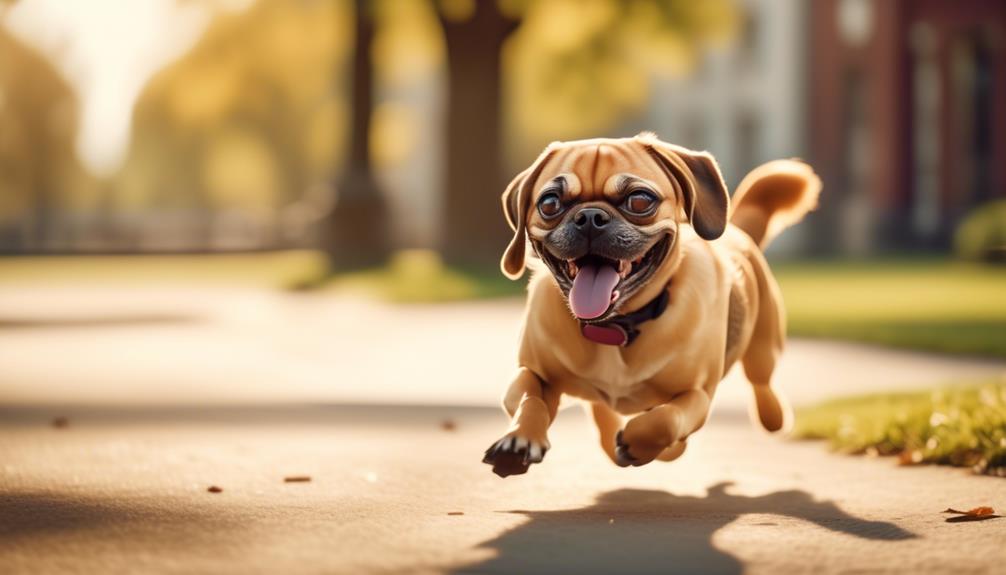
How much exercise do Puggles need to stay healthy and prevent unruly behavior? Puggles are an energetic breed that requires at least 30 minutes of exercise per day to stay fit and prevent behavioral issues. They enjoy activities such as playing fetch, going for walks, and running in the yard. Regular exercise helps them burn off excess energy and keeps them mentally stimulated. To give you a better idea of their exercise needs, here’s a table:
Exercise Activities | Frequency
— | —
Walks | Daily
Playtime | Daily
Running | 3-4 times a week
Interactive toys | Regularly
Training
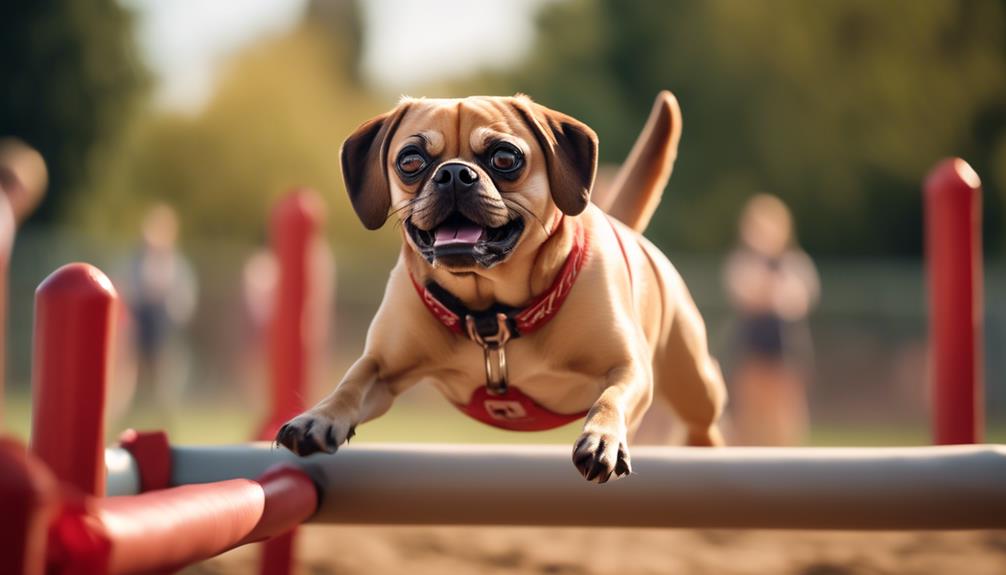
To ensure a well-behaved Puggle, it’s important to provide consistent and positive training from an early age. Here are some key training tips for your Puggle:
- Start early: Begin training your Puggle as soon as you bring them home to establish good habits and prevent any unwanted behaviors.
- Use positive reinforcement: Reward your Puggle with treats, praise, and affection when they exhibit the desired behavior. This will motivate them to repeat it.
- Be patient: Puggles can be stubborn at times, so it’s important to remain patient and consistent with your training efforts.
- Socialize your Puggle: Expose your Puggle to different people, animals, and environments to help them become well-rounded and confident.
Grooming
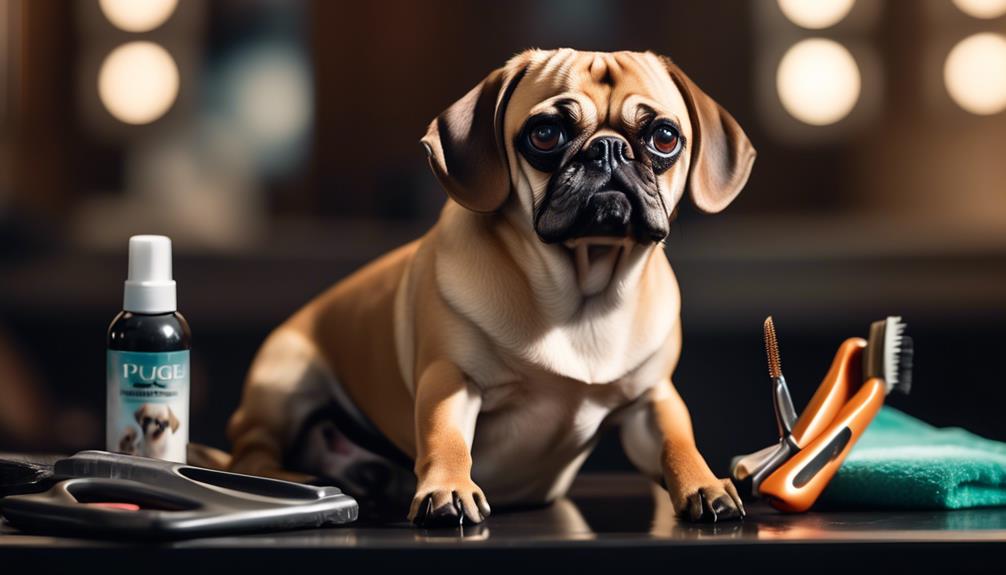
Maintaining a well-groomed Puggle is essential for their overall health and appearance. Puggles have short, smooth coats that are easy to groom. They come in various colors and shed moderately.
To keep their coats in good condition, it’s recommended to brush them weekly to remove excess hair and prevent matting. Regular bathing is also important to keep their skin clean and healthy.
Additionally, you should clean their ears regularly to prevent infections, trim their nails as needed, and brush their teeth regularly to maintain good dental hygiene.
Teeth Brushing
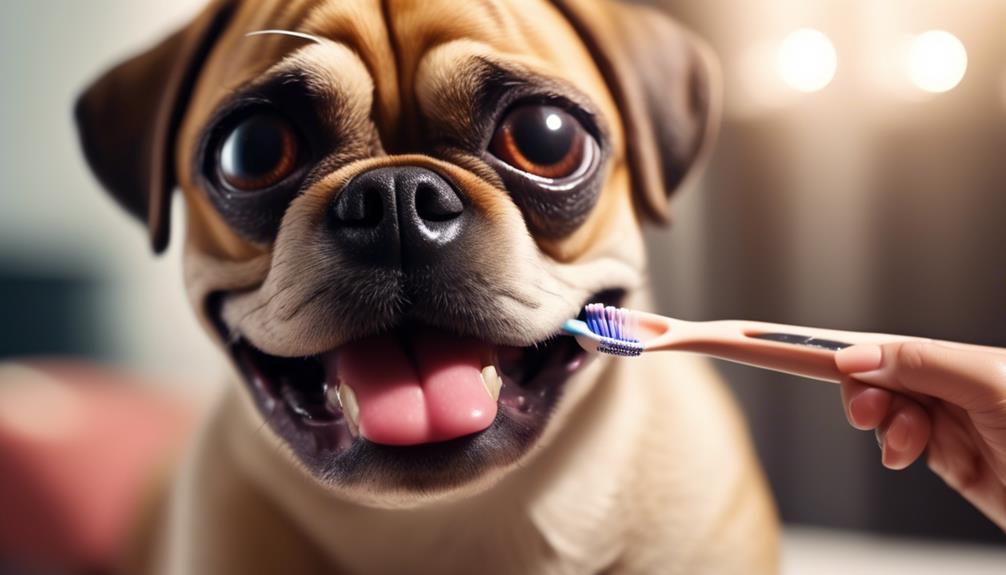
Regular teeth brushing is an important part of maintaining your Puggle’s dental hygiene and overall health. Here are a few reasons why you should make it a priority:
- Prevents plaque and tartar buildup: Brushing your Puggle’s teeth helps remove food particles and bacteria, preventing the formation of plaque and tartar, which can lead to gum disease and tooth decay.
- Reduces bad breath: Regular brushing helps freshen your Puggle’s breath by removing odor-causing bacteria.
- Prevents dental diseases: By keeping your Puggle’s teeth clean, you can reduce the risk of periodontal disease, tooth loss, and other dental problems.
- Promotes overall health: Poor dental hygiene can lead to systemic health issues, such as heart disease and kidney problems. Regular teeth brushing can help prevent these complications.
Nail Trimming
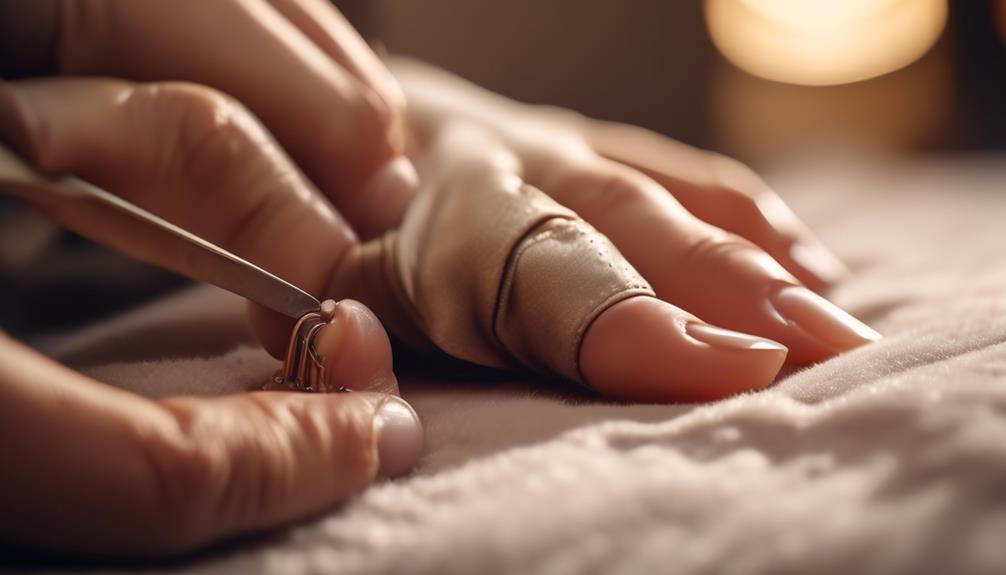
Trimming your Puggle’s nails is an essential part of their grooming routine. Regular nail trims are important to keep their nails at a healthy length and prevent discomfort or injury.
Start by getting your Puggle comfortable with having their paws touched and manipulated. Use a pair of dog nail clippers and make sure to avoid cutting into the quick, which is the sensitive part of the nail. If you’re unsure, it’s best to consult a professional groomer or veterinarian.
Remember to take it slow and reward your Puggle with treats and praise throughout the process.
Health

To ensure the well-being of your Puggle, it’s important to prioritize their health. Here are some key health considerations for your Puggle:
- Stenotic Nares: Look out for signs of noisy breathing and exercise intolerance, and consult your vet for weight control and potential surgical repair if it becomes severe.
- Hip Dysplasia: Watch for signs of pain and lameness, and consider getting X-rays to screen for this condition, which can be worsened by environmental factors.
- Hypothyroidism: Keep an eye out for infertility, obesity, and lack of energy, and manage the condition with daily medication.
- Patellar Luxation: Be aware of lameness and arthritis, as surgical repair may be necessary.
Living Environment
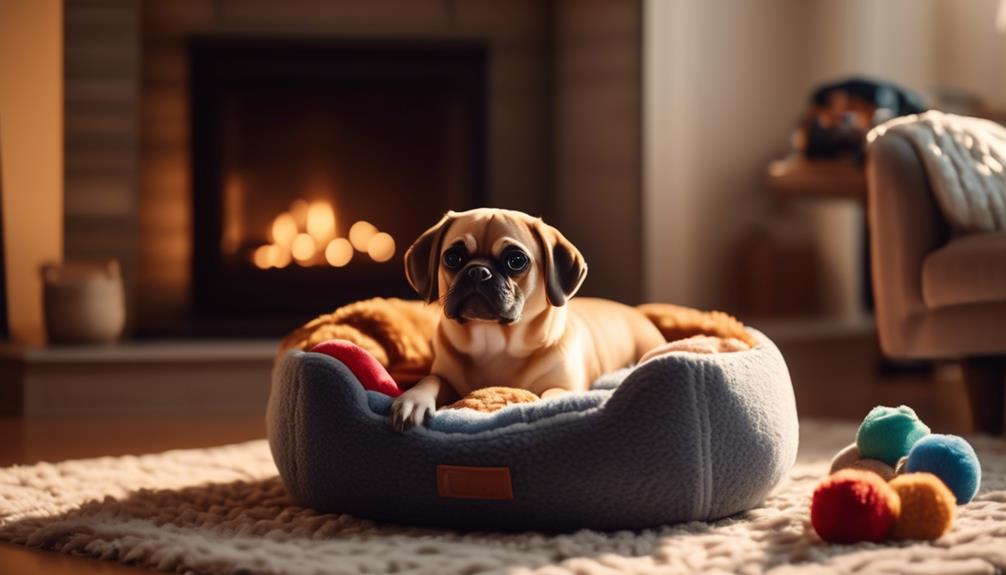
Puggles adapt well to various living environments, making them versatile and adaptable companions. Whether you live in a small apartment or a spacious house, Puggles can easily adjust to their surroundings.
They’re well-suited for apartment living as long as they receive ample exercise to prevent unruly behavior. Puggles enjoy going for walks, playing fetch, and running in the yard, so make sure to provide them with regular exercise to keep them happy and healthy.
Additionally, Puggles respond well to positive reinforcement training, so creating a structured and stimulating living environment will help them thrive. Just remember to supervise interactions between Puggles and young children to prevent any accidents and ensure a harmonious living environment for everyone.
Supervision

When supervising interactions with Puggles and young children, it’s important to prevent any accidents and ensure a safe environment for both. Here are some key points to consider:
- Establish Boundaries: Set clear boundaries for both the Puggle and the child to follow during their interactions. This can help prevent any rough play or unintentional harm.
- Teach Proper Handling: Educate children on how to approach and touch Puggles gently and respectfully. This will help minimize the risk of the dog feeling threatened or reacting negatively.
- Provide Adult Supervision: Always have an adult present during interactions between Puggles and young children. They can intervene if necessary and ensure that the play remains safe and enjoyable for everyone involved.
- Monitor Body Language: Pay attention to the body language of both the Puggle and the child. This can help identify any signs of discomfort or fear and allow for immediate intervention if needed.
Health Concerns
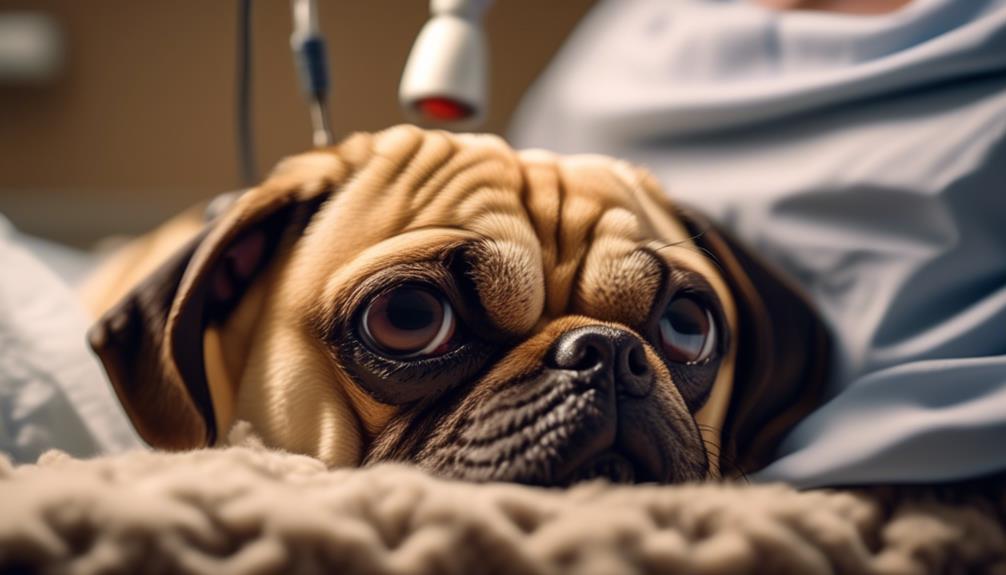
Establishing boundaries and teaching proper handling during interactions with Puggles and young children is crucial, as it allows for a safe environment and helps prevent any accidents or harm.
Now, let’s discuss the health concerns associated with Puggles.
Puggles are generally healthy dogs, but they’re prone to certain health conditions. One common health concern is Stenotic Nares, which can cause noisy breathing and exercise intolerance. This condition can be managed through weight control and may require surgical repair if severe.
Another health issue is Hip Dysplasia, which can cause pain and lameness. It can be worsened by environmental factors and is screened through X-rays.
Puggles can also develop Hypothyroidism, which may lead to infertility, obesity, and lack of energy. This condition is managed with daily medication.
Additionally, Puggles may experience Patellar Luxation, causing lameness and arthritis. Surgical repair may be necessary.
Lastly, Puggles can have epilepsy, a disorder causing seizures that can be managed with medication but not cured.
Regular veterinary check-ups and proper care can help ensure the overall health and well-being of your Puggle.
Frequently Asked Questions
Are Puggles Hypoallergenic?
No, Puggles are not hypoallergenic. They have short, smooth coats that shed and can trigger allergies. If you have allergies, it’s important to take this into consideration before bringing a Puggle into your home.
Do Puggles Bark a Lot?
Yes, Puggles can bark a lot. They have a tendency to be vocal and may bark to communicate their needs or alert you to something. Proper training and socialization can help manage excessive barking behavior.
Can Puggles Be Left Alone for Long Periods of Time?
Yes, Puggles can be left alone for long periods of time, but it’s not ideal as they are social dogs. They may become anxious or develop separation anxiety. It’s important to provide them with mental stimulation and exercise before leaving.
Are Puggles Good for First-Time Dog Owners?
Yes, Puggles are good for first-time dog owners. They have friendly and outgoing personalities, are relatively easy to train, and adapt well to apartment living. Just make sure to provide ample exercise and supervision.
Do Puggles Have a Strong Prey Drive?
Yes, Puggles do have a strong prey drive. They may chase smaller pets due to their hunting instincts. Early training and exposure can help minimize this behavior. Proper supervision is important to ensure the safety of other animals.
Conclusion
In conclusion, Puggles are a fantastic choice for anyone looking for a friendly and outgoing companion. With their easy-to-maintain coats and adaptability to different living environments, they make great family pets.
While they may have some health concerns to be aware of, overall they’re a generally healthy breed. With proper exercise, training, and supervision, Puggles can bring joy and love to any household.
Consider adding a Puggle to your family today!




